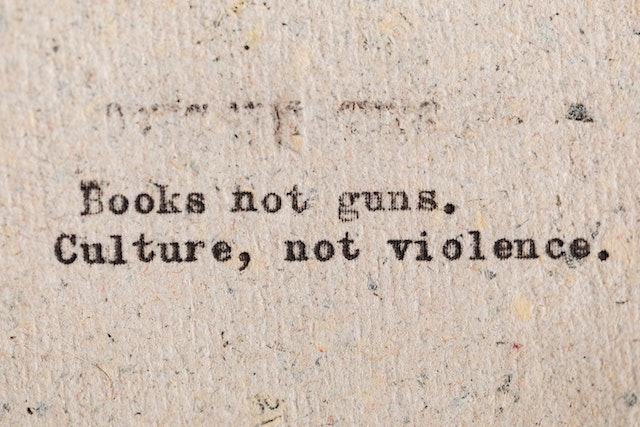Nonviolence is a philosophy and strategy for social change that rejects the use of violence. Pacifism, on the other hand, is a broader worldview that opposes all forms of violence, including self-defence. While both philosophies share a commitment to peace, they differ in their approach to achieving it. Nonviolence relies on tactics like civil disobedience and nonviolent resistance to bring about social change, while pacifism generally advocates for the complete avoidance of violence.
What is Nonviolence?
Nonviolence is the practice of refraining from violence in all forms, both physical and psychological. Nonviolence can be passive, such as when someone chooses not to engage in violence even when they have the opportunity to do so. Nonviolence can also be active, such as when someone actively works to prevent violence from occurring.
What is Pacifism?
Pacifism is the opposition to war and violence. It is the belief that all conflict can and should be resolved peacefully. Pacifists typically reject the use of violence in any form, even in self-defence.
History of Nonviolence
The origins of the nonviolence movement can be traced back to India and the teachings of Mahatma Gandhi. In the early 20th century, Gandhi successfully employed nonviolence to lead the Indian people in their struggle for independence from British rule. His methods were so effective that they inspired other social movements around the world, including the American Civil Rights movement led by Dr. Martin Luther King Jr.
Nonviolent protests and civil disobedience are still being used today to bring about change in societies around the world. The power of nonviolence lies in its ability to create solidarity and unity among those who participate, as well as its capacity to generate public support for a cause. When used effectively, nonviolence can be a powerful tool for social transformation.
Is nonviolent protest effective?
In recent years, nonviolent protest has played a key role in the Arab Spring uprisings, the Occupy movement, and the Black Lives Matter movement. In each of these cases, protesters have used nonviolent tactics to draw attention to their cause, demand change from those in power, and ultimately bring about social and political transformation.
Though it is not always successful, nonviolent protest is an effective way for people to resist oppression and bring about change. When used strategically, it can be a powerful tool for challenging unjust systems and winning rights and freedoms for all people.
What is nonviolent economy?
A nonviolent economy is one where the primary means of production and distribution are not based on violence. This includes but is not limited to: agriculture, manufacturing, energy production, transportation, banking/finance, media, and education.
In a nonviolent economy, the use of force is only employed as a last resort – e.g., in self-defense. The goal is to create an economic system that maximizes cooperation and minimizes conflict.
There are many different ways to organize a nonviolent economy; there is no single blueprint or silver bullet. However, some key principles include:
– Decentralization: giving power back to the people by decentralizing control over the means of production and distribution.
– Localization: keeping production and consumption as close to home as possible in order to minimize environmental impact and build strong communities.
Why do people oppose pacifism?
There are many reasons why people might oppose pacifism. Some might see it as a form of cowardice, or as a way of shirking responsibility for the safety of others. Others might believe that violence is sometimes necessary in order to achieve justice or protect the innocent, and that pacifism would therefore be ineffective or even harmful.
Some people also argue that pacifism is simply unrealistic, and that it fails to take into account the fact that there are many people in the world who are willing to use violence to get what they want. Others argue that pacifism is a form of moral relativism, and that it leaves us unable to make firm judgments about right and wrong.
Whatever the reason, it is clear that there are many people who do not share the pacifist ideal of nonviolent resistance to unjustifiable aggression.
Do pacifists believe in self defense?
The short answer is no, While nonviolent activists may use self-defense in some situations as a means to protect themselves or others from harm, true pacifists would never do so. For them, any form of violence, even in self-defense, is unacceptable.
What are the popular types of pacifism
There are many different types of pacifism, but some of the most popular ones include:
–Nonviolent resistance: This type of pacifism typically involves using nonviolent methods, such as civil disobedience and strikes, to protest against injustice and violence.
–Pacifist anarchism: This form of pacifism believes that the state and all forms of hierarchy are inherently violent and should be abolished.
–Religious pacifism: This is based on the belief that violence is contrary to the will of God or another higher power.
–Absolute pacifism: This is the belief that violence in any form is always wrong and can never be justified.
Photo by Karolina Grabowska: https://www.pexels.com/photo/anti-war-sentence-on-old-paper-5993566/








